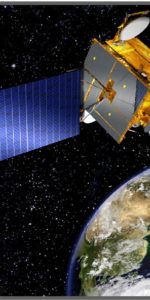[youtube_video] http://www.youtube.com/watch?v=Sb_GzQyMsBQ[/youtube_video]
CAPE CANAVERAL, Fla – Starting at 5 a.m. EDT, my day began early. I drove across the state to Kennedy Space Center, I was excited to meet with an old friend – her name is Endeavour. By the time my day was over – I would unexpectantly meet two other “old friends.”
Fires that had blazed throughout the night – had left the region covered in a thick layer of smoke. This slowed efforts to move space shuttle Endeavour from its current home in the massive Vehicle Assembly Building (VAB) to its new home in Orbiter Processing Facility – 2 (OPF-2). The move took place in bright sunlight that allowed those in attendance to see the elements that once allowed the shuttle to fly were missing. This served as a reminder that the time when she once floated amongst the stars – was over.

Endeavour’s short journey should have marked the end of my day. However, a few well-placed questions had revealed that it might be possible for me to visit the first shuttle I saw lift off from Kennedy Space Center proper (at the press site’s turn basin) – Atlantis.
When the Kennedy Space Center Visitor Complex first began offering its “KSC Up-Close” tour, visitors marveled at the sheer size of the VAB. That is – until recently. With space shuttle Atlantis sitting center-front of the transfer aisle – guests now fixate on the orbiter (given the shuttle’s position it is hard not to fixate on it). For us in the media, folks that have wandered amongst these amazing machines for years – it is a treat to get to see what it is like to view these things for the first time. Watching the Visitor Complex’s guests – provided us with this opportunity.

“Guests used to stare up in awe at the expansive caverns of the VAB,” said Nick Thomas, a communicator with the Kennedy Space Center Visitor Complex. “Once Atlantis entered the transfer aisle – guest’s eyes turned down – and filled with joy upon seeing Atlantis!”
For someone that is not exactly fond of heights – looking down from the sixteenth level of the VAB at the transfer aisle many feet below can be…disconcerting. However, it is also the best way to appreciate the wonder that Atlantis engenders, and why. From our vantage point in the rafters, tourists appear as small dots – each emitting flashes of light (from their cameras) and Atlantis is a beautiful white bird in the center of the grey of the VAB.

The last stop in my odyssey was the Orbiter Processing Facility-1 (OPF-1). The OPFs – never cease to amuse. Whenever you enter any of these structures (excluding OPF-3 which is being converted to process Boeing’s CST-100 space taxi) you expect to see an orbiter – but the reality is quite different. You see scaffolding, ladders, and equipment – but very little shuttle. As you walk around – you see the reinforced carbon-carbon peeking out at you and then, eventually you’re looking up at the belly of Discovery.
Moving around to the back of the building the enormous tail-cone arcs out. The tail-cone is utilized whenever one of the orbiters takes to the air on the back of the 747 Shuttle Carrier Aircraft or SCA. To get adequate shots of this structure you have to move to the far back of OPF-1 and crane your neck up – way up.
[youtube_video] http://www.youtube.com/watch?v=eootEJwbeEo[/youtube_video]
In my previous trips to the OPFs – this was about as close as I was allowed to get. That all changed on this day. As the shuttle fleet is no longer operational – the media is allowed far greater access to Discovery. For someone that has seen the orbiters close up – but not this close – it was an overwhelming experience.
Standing on a platform that overlooks Discovery’s right wing allows one to look into a port that peers directly into the inner-workings of the orbiter. Tiers and steps (many, many steps). Grant access to the exterior of the cockpit, the star-trackers and the payload bay.

This stunning level of access keeps you moving at a frenetic pace and then you see something that makes you stop. In my case it was the star-tracker ports. They looked just like I remembered them from an image – which was taken by a crewmember on the International Space Station. It was then that I recalled the history that each of these vehicles held.
This turned out to be the greatest challenge of the day – fighting the urge to just stop and appreciate the history that stood inches from my face – and fingertips (touching the shuttle is a no-no). You are on NASA’s time and although our escorts were flexible – you don’t want to abuse their generosity.

After an almost 12-hour day – I was beginning to get very tired. I had a few more stops to make and it was at one of these that the true impact at what I had been privileged to see – truly sank in. Space Shirts is, for space buffs, one place that they always make sure to visit whenever they visit Florida’s Space Coast. I am not an exception to this rule.
I stopped by to pick up some shirts for my AmericaSpace coworkers. As always, I show people wherever I go the images and video I had taken of my experiences. The crew working at Space Shirts animatedly reviewed my images and regaled me with their experiences. One young lady grew sad as she viewed my images of the orbiters (many of these pictures showed the orbiters without their engines). Her thoughts echoed in my head as I made the long drive home.
“They’re nice pictures but they make me sad,” she said. “We won’t ever hear those twin sonic booms again…all those amazing things are gone.”
[youtube_video] http://www.youtube.com/watch?v=U001Z3XfsYQ[/youtube_video]
Missions » ISS »



